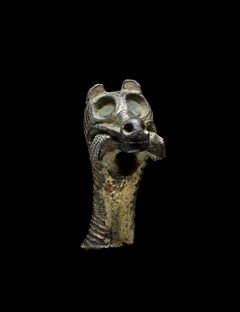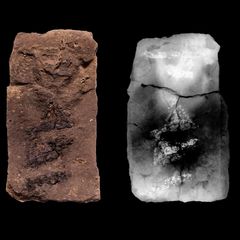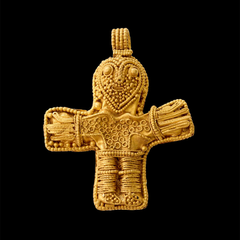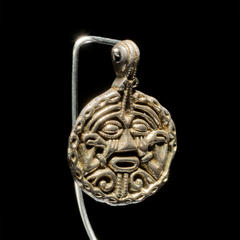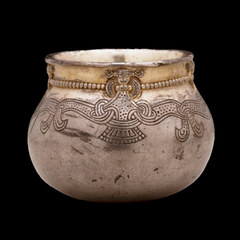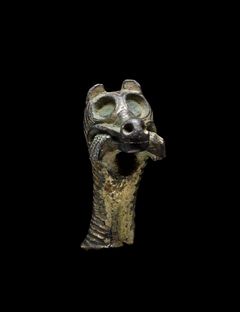New Viking exhibition at the National Museum of Denmark
The National Museum of Denmark has the loan of Kasper Holten from the Royal Theatre to direct a new, spectacular exhibition about the strong women of the Viking Age. “The Viking Sorceress” opens on the 27th of June 2024.
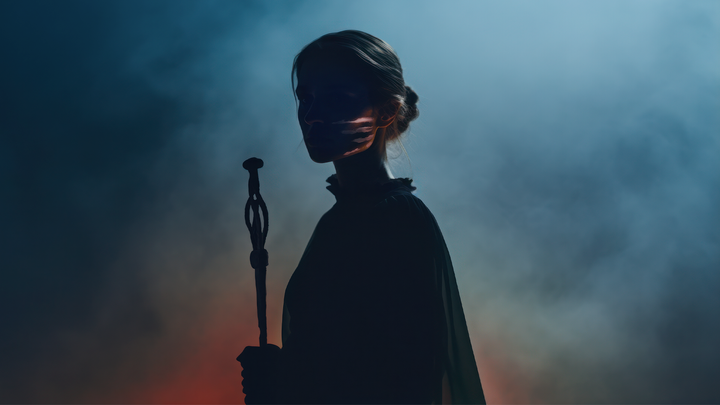
“The Viking Sorceress” will be an exhibition unlike any other in the history of the National Museum. This is made entirely clear by Rane Willerslev and Kasper Holten. Together, their vision is to unite new scientific discoveries, sensory storytelling and a magnificent scenography into one adventure focusing on the powerful sorceress of the Vikings, the Vǫlva.
“We are used to thinking about what the Vikings were – but rarely about who they were, or what they thought. In this exhibition, we seek to reflect how the Vikings attempted to understand their place in the world – helped by the Vǫlva. In doing so, we hope to attain an understanding of the fact that other people from other periods of time do not experience the world in the same way as we do. This is a decisive insight in terms of navigating the world as modern people of today”, says director of the National Museum, Rane Willerslev.
“I was all fired up when Rane asked me a few years back – because I love telling stories, and it was an exciting challenge to do that within this framework. Normally, I tell invented stories, but getting the strong woman of the Viking Age, the Vǫlva, to speak to us directly today was just a crazy challenge. And it has been a fascinating journey to get to know the skilled experts at the National Museum in order to try and bring this to life by means of theatre effects”, says Kasper Holten, who is the theatre manager of the Royal Theatre and one of Denmark’s most sought-after stage directors, who has worked at some of the greatest theatres across the world.
The strong women of the Viking Age
The Vǫlva was both a female cult leader and a recurring mythological figure. And although most people think about the men and their raids when they think about the Viking Age, the Vǫlva was the one who possessed powers so great that even the god of kings, Odin himself, needed help and advice from women of her kind.
The exhibition opens up a universe wherein visitors will become acquainted with the Viking-Age women who fulfilled the role of Vǫlva, their function, their stories and who they were. For a Vǫlva was an influential and feared woman, and her kind played a surprisingly important role for Viking-Age people in their attempts to understand the world around them, as well as their own fate. Even Harald Bluetooth, who brought Christianity to Denmark, appears to have consulted a Vǫlva.
In this exhibition, we are invited into the worldview of the Vikings and to understand their thoughts about themselves. These are thoughts that we might otherwise regard as reserved for people of modern times.
“Humans have always attempted to understand the world and their own existence, and for these purposes we have always sought help – from shamans, from religion, self-help books, psychologists, Google or ChatGPT. The Vikings went and asked the Vǫlva”, says Rane Willerslev.
The End of the World
The exhibition opens with a journey, and visitors follow in the footsteps of the powerful god Odin when meeting the Vǫlva, who speaks to us directly.
The Vǫlva tells Odin, and us visitors, the story about Ragnarǫk: This is a story about a world wherein human beings are deeply dependent on the nature that surrounds them. It is a story about the fear of what will happen if chaos is unleashed in the world – or if we were to unleashed chaos within ourselves. Hopefully, this journey will bring us closer to the people of the Viking Age – and make us see ourselves in the mirror.
Kasper Holten has curated the exhibition through Steffen Aarfing’s scenography. Together, the two of them have staged opera productions across the world, including the acclaimed production of the opera “Ragnarok” at the Danish Royal Theatre. Marie Carsten Pedersen from Zetland is the exhibition dramaturgist, and archaeologist and museum curator Peter Pentz together with exhibition editor Mette Boritz from the National Museum make up the specialist team behind the exhibition.
Highlighted items The Viking Sorceress:
The exhibition displays a range of highlighted items that have been reinterpreted by the most recent scholarship.
- A piece of the Vǫlva’s smile
Once in a while, archaeological finds are made that go far beyond the ordinary. This goes for the highly unusual Viking-Age woman’s grave that was found at the ring fortress of Fyrkat near Hobro. Among the roughly 30 graves here, this one stands out because of its mysterious grave goods – among these a metal staff and seeds from the plant henbane, which has mind-altering abilities. In Prophecy of the Viking Sorceress, a piece of this woman’s mouth is displayed. Researchers from the National Museum suppose her to have been a royally appointed Vǫlva to the retinue of Harald Bluetooth himself.
- The Vǫlva’s amulet – Finest gold crucifix from the North
One Friday in March 2016, a Dane made an interesting find at a church in Fyn (Funen). A small gold pendant, 4.1 cm of size and in the shape of a man with his arms stretched out like Christ on the cross, was unearthed. The crucifix is from the 10th century. Scholars believe that a Vǫlva may have carried this alongside other amulets.
- The Fenris Wolf
In the poem “The Seeress’ Prophecy”, the Wolf is a destructive force in the depiction of Ragnarǫk.
The exhibition displays a spectacular brooch of very high artistic quality, which depicts the Fenris Wolf with Tyr’s hand between its jaws. He lost his hand when the Wolf was fettered; but when Ragnarǫk comes, Fenris will run free and swallow Odin himself.
- The Vǫlva’s treasure
A little more than 1000 years ago, in a field near Lille Karleby in Sjælland (Zealand), someone buried an absolutely unique hoard – it is like no other Viking-Age hoard. It contains 392 items, among these silver cups, a large brooch dragtnål, a silver arm ring and a large brooch made of bronze. But the unusual part of this find is the 53 amulets, 300 glass beads, amber, rock crystal and a plaited silver chain. This has made scholars wonder whether this hoard perhaps belonged to a Vǫlva and had some ritual function.
The exhibition is supported by:
A.P. Møller and wife Chastine Mc-Kinney Møllers Foundation for Almene Formaal
Augustinus Foundation
Kontakter
Karen Torp-PedersenKommunikationsmedarbejder
Tlf:+45 41 20 60 96ktp@natmus.dkBilleder
Links
Følg pressemeddelelser fra Nationalmuseet
Skriv dig op her, og modtag pressemeddelelser på e-mail. Indtast din e-mail, klik på abonner, og følg instruktionerne i den udsendte e-mail.
Flere pressemeddelelser fra Nationalmuseet
Stor bevilling til ny vikingeudstilling i Tirpitz og på Nationalmuseet18.12.2025 07:00:00 CET | Pressemeddelelse
Med en generøs bevilling på 33 millioner kroner fra A.P. Møller og Hustru Chastine Mc-Kinney Møllers Fond til almene Formaal forbindes Vest- og Østdanmarks vikingehistorie i nyt, storstilet udstillingssamarbejde. Scenen er sat for dem, der skabte de sejl, som gjorde vikingerne i stand til at stævne ud fra Danmark og Norden og sejle ind i verdenshistorien. Udstillingen Bag sejlet åbner i Tirpitz i 2027 og på Nationalmuseet i 2029.
En rigtig jul var lumre lege, fed mad, fest og store forventninger10.11.2025 11:57:42 CET | Pressemeddelelse
Ny juleudstilling på Nationalmuseet: Julens Rødder – hvad er en rigtig jul? Sæt dig til bords hos en borgerskabsfamilie i 1870, giv nissen grød på gården, klap bonden bagi og se ting og ritualer, som har formet vores jul. 14. november 2025 – 4. januar 2026.
"Unge har altid udfordret deres plads i samfundet": Varbergs danmarkshistorier klar med ny sæson om 8.000 års ungdomsliv30.9.2025 05:30:00 CEST | Pressemeddelelse
Især én historie om en ung kvindes hårde skæbne har værten Jeanette Varberg svært ved at slippe i den nye sæson, som har premiere 1. oktober.
Overlev i fortiden29.9.2025 14:34:40 CEST | Pressemeddelelse
I Nationalmuseets nye børneoplevelse “Kan du overleve i fortiden” træder børnene ind i historiske scener. Her vil de finde ud af, om de har det, der skal til for at overleve i fortiden. Børnefamilier kan tage på tidsrejserne hver weekend frem til 2. november – og hver dag i efterårsferien (uge 42).
Nationalmuseet opruster fremtidens udstillinger med ny konceptenhed18.9.2025 13:31:37 CEST | Pressemeddelelse
Museets udviklere får nu langt bedre plads til at lege og eksperimentere med udstillingerne, inden de kan opleves af publikum på besøgsstederne rundt om i landet. Det skal give stærkere og mere gennemprøvede udstillinger for de besøgende.
I vores nyhedsrum kan du læse alle vores pressemeddelelser, tilgå materiale i form af billeder og dokumenter samt finde vores kontaktoplysninger.
Besøg vores nyhedsrum


